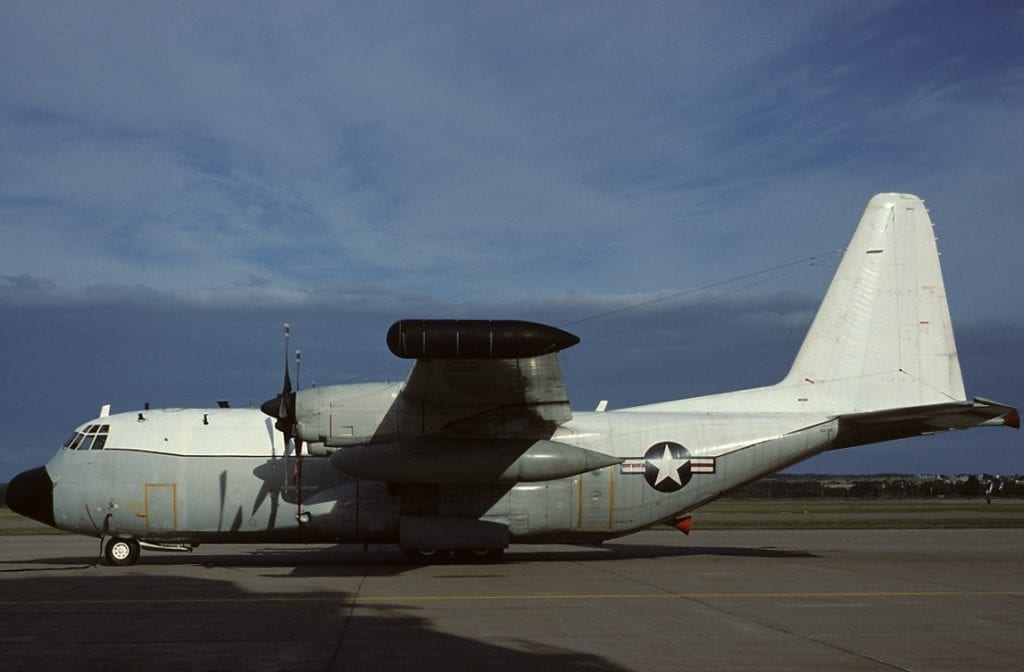
ARLINGTON, Va. — The U.S. Navy has awarded a developmental design contract to an aerospace company for very low frequency communications systems modernization for integration into C-130 aircraft.
The Naval Air Systems Command awarded Collins Aerospace of Cedar Rapids, Iowa, a $48.3 million contract for “developmental design and risk reduction engineering efforts for airborne very low frequency systems modernization in support of Airborne Strategic Command, Control, and Communications Program Office (PMA-271) program capability requirements,” according to a Feb. 22 Defense Department contract announcement.
The VLF system would be installed on C-130 aircraft, which is planned by the Navy to assume the TACAMO strategic communications role from the E-6B Mercury aircraft.
The communications role called TACAMO by the Navy — a term meaning “Take Charge and Move Out” — has been performed for three decades by the E-6 Mercury, a variant of the Boeing 707 airliner. After the Cold War, the Airborne National Command Post role previously performed by Air Force EC-135 “Looking Glass” aircraft was incorporated into the E-6 with the installation of the Airborne Launch Control System, combining the TACAMO and ALCS in one platform.
The Navy has performed the TACMO mission since 1963, beginning with four C-130G (later EC-130G) Hercules aircraft, later augmented by eight newer EC-130Q Hercules. The E-6 replaced the EC-130s, giving the two TACAMO squadrons, VQ-3 and VQ-4, a faster, quieter, more comfortable platform for the long missions.
The TACAMO aircraft are equipped with a long trailing-wire antenna used to relay very low frequency radio messages to submerged ballistic-missile submarines. The airframes go through considerable stress as they maintain high angle of bank for prolonged periods to maintain tight orbits to wind the trailing-wire antenna into a vertical position, needed for the radio waves to penetrate the water most effectively.
A request for information issued Dec. 18, 2020, by PMA-271 announced the Navy “intends to negotiate and award sole-source contracts to Lockheed Martin Corporation, Marietta, [Georgia], for the efforts associated with the procurement of up to three C-130J-30 “Stretch” green airframes in [fiscal 2022/2023] for testing and analysis.
The C-130J is the current, much more modern version of the C-130 and is flown by the Air Force, Marine Corps and Coast Guard, as well as many foreign air forces. The C-130J-30 is similar but has a 15-foot-longer fuselage. The rugged C-130J is able to operate from many more airfields than the current E-6B Mercury.
“Specifically, this contract provides non-recurring engineering effort to address size, weight, and power cooling in the components, systems, subsystems, or weapons replaceable assembly, model-based systems engineering development, weight reduction analysis, cyber security risk assessment and logistics analysis,” the announcement said.
The contract work is expected to be completed in March 2024.
- BlueHalo to Test C-UAS System on Marine Corps JLTV - April 29, 2024
- USS George Washington Deploys to U.S. Southern Command, Eventually Headed to Japan - April 26, 2024
- SECNAV Advocates Increased Legal Immigration to Increase Shipbuilder Workforce - April 23, 2024



